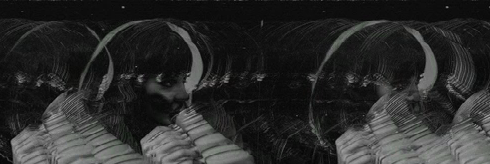
In the first decades after film was invented, its practitioners wrote brilliant, poetic essays debating whether what they had on their hands was a new medium or simply a tool for furthering existing practices like theater or painting. These artists very often used the words "magic" and "wizardry" to describe what they were up to in creating moving images. Today's films use devices further removed from the real to give us the illusion of reality and whether to perpetuate the appearance of seamlessness or to assuage the ADD-addled minds of contemporary net-surfing viewers, everything is way way sped up. Enter Kurt Ralske. He'd like to slow things down. The Boston-based artist's video installations, performances, digital prints, and software art have long addressed the formal questions many people have ceased asking about film, particularly the relationship between sound and image and stillness versus motion. This was the case with his "Alphaville" (Motion-Extraction-Reanimation), in which he reprocessed elements of Godard's famous film and stretched and repeated them across a wider plane, questioning the function of surface and duration in the original piece. In a new project entitled Zero Frames Per Second, Ralske has dissected the films of Godard, Kubrick, Murnau, and others into a series of still images. Each film is represented by two frames--one condensing all motion into a single image and the other accumulating all moments of non-movement. The artist explains that, "Within these images the cinematic experience is freed from duration, narrative, and signification, producing a visually abstract record of the information from the 150,000 or so frames per film." The works free the mind to quickly take in a film in the slowest of slow-motions. They are on view at New York's School of Visual Arts through September 12th. - Marisa Olson

